Here’s a recent question from Elizabeth and, fair warning, my rather long-winded part-one of an answer:
Do you have a format that you follow for laying out your storytime to have everything at hand? I’ve been struggling with this aspect–I want to have everything right there, spelled out so I don’t ramble yet I don’t want it to appear that I’m constantly checking my notes and reading. Sometimes rhymes come easily to me, other times no matter what I cannot keep them in my head and struggle to find where I am. Do you have any suggestions? Thank you!
I have used several different strategies over the years for staying on track in storytime, so I’ll share a few in the hopes that something in here helps you out or sparks a fresh idea for you! This post lists the ideas that have to do with a written plan of some sort, and part two (posted later this week) will have an idea or two about storytime content and pacing.
Also, for context, I am very much a planner and always have a sequence for my storytimes set out in advance. I may deviate from the plan in response to the group or phase of the moon but for the most part I know what order I want to do things in, so that affects the types of notes and support systems I’ve created for myself. In addition, the size of our groups are not so large, so I am able to run storytime sitting down in a chair.
Hidden Paper on the Floor
Since I first started doing storytime, I have always been more comfortable with my whole plan written out and kept where I could see it while presenting. When I began at my current library, part of our staging was a darling lightweight wooden chest in which a teddy bear would sit during storytime. I wrote out my storytimes like this in Word docs, with the sequence first followed by the words to most of the activities listed:
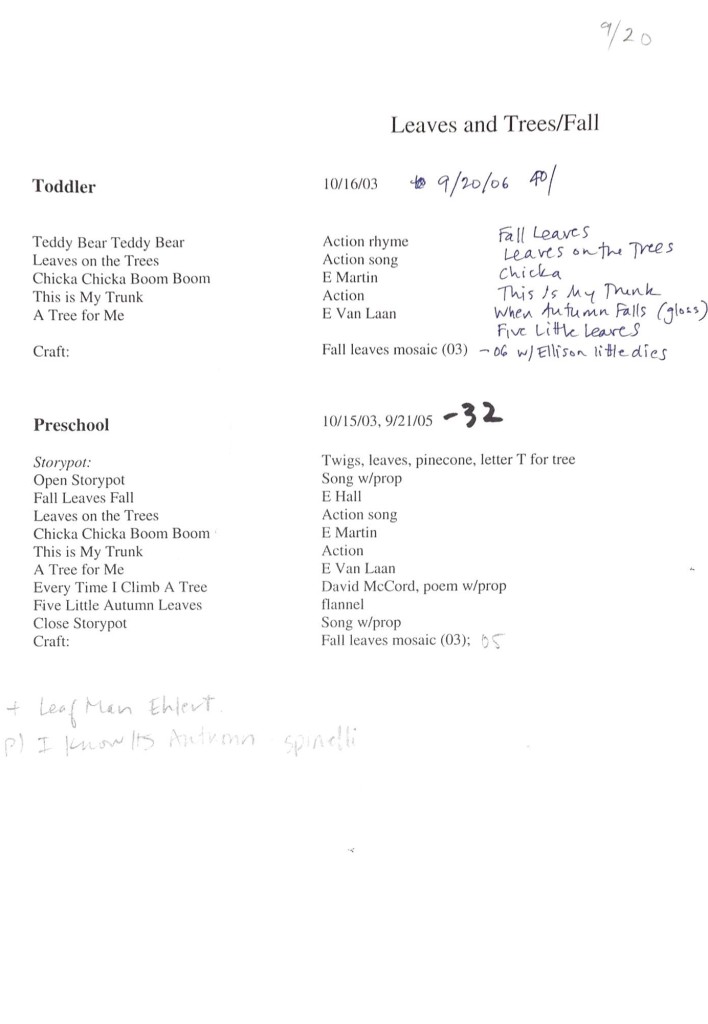
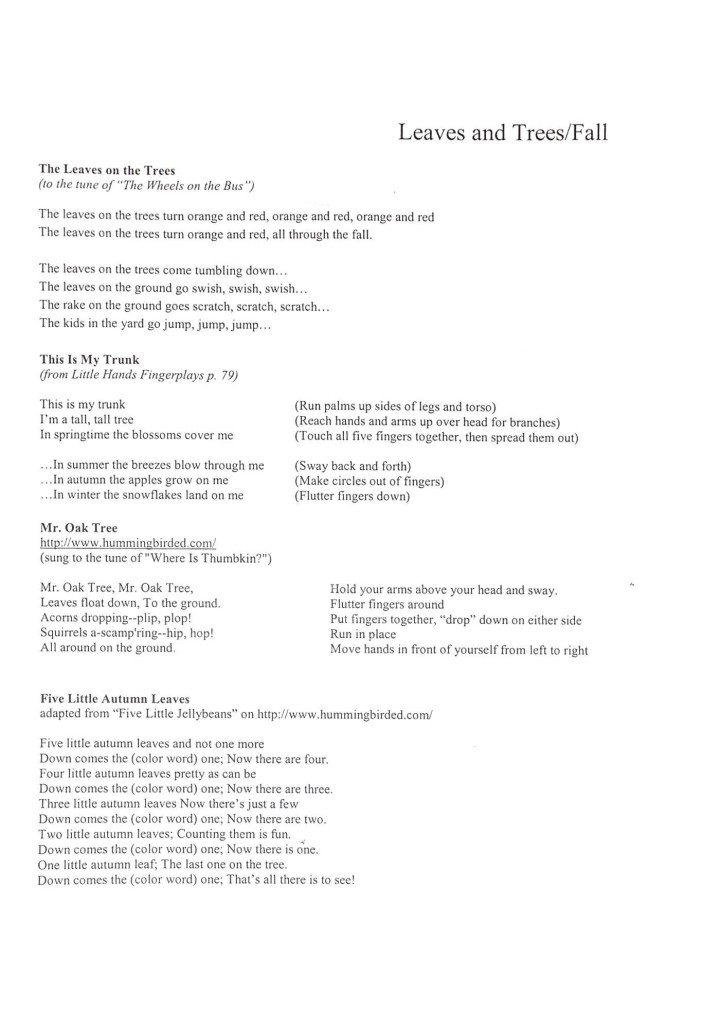
and I found that if I set the printout in the bottom of the chest next to the bear I could glance down and see what was next on my list, while the paper stayed out of sight from the audience (and out of reach from little hands). I could write notes to myself on the printout, keywords for song verses, or reminders for announcements. That darling chest is no more, but here is a quick attempt at a reenactment of what this looked like from my point of view:
Alas, my eyes are 15 years older than they were then and I’d have to print my notes in about 200 pt Helvetica to see them on the floor, so this isn’t a trick that works any more!
Index Cards on the Chair
Another strategy I developed when I first started presenting baby storytimes. I found myself working with a more limited set of songs and rhymes for the babies’ sakes, and using them over and over. So my agendas were less unique and more mix-and-match. Instead of a whole agenda on a piece of paper, I wrote each song and rhyme on an index card in nice thick Sharpie, and kept them alphabetically (duh) in a box.
When I planned my storytimes, I’d pick and choose from my cards, and then stack them on the chair next to me.
Here’s a picture of my setup at that point: I sat in the blue chair, with my feltboard propped on a storytime-room chair next to me. The index cards would go in a pile on the seat in front of the feltboard.
As storytime progressed, I would flip the cards over, one by one, and could see what came next AND what the words were, all at once, just by glancing down and to my right a bit. Here’s another recreation:
By this time we had started delivering literacy messages to the parents and caregivers during storytime, and it was easy to write out my message and put it in the stack in the right place. If I wanted to skip a song, I would just flip over the cards until I saw a good next activity, and did that. (I would put in extra songs and rhymes to the stack, so I would have enough material even if I wanted to skip something. I am SO not an impromptu storytime provider. Even my winging-it is done to plan!)
Song Sheets for Everybody
After a year or so of index cards I was pretty much in the baby storytime groove and kind of phased out of using them. The next thing that happened was I experimented with creating a song sheet handout for the grownups every week. I folded it down the middle so that my first two songs & rhymes (always the same) fit on the front page and my last two songs & rhymes (also always the same) fit on the back page. On the middle spread, listed in order I planned to use them, were the songs and rhymes that changed up every week, with their lyrics and movement prompts.
Here’s the outside page:
Before storytime I’d run off copies, and I’d mark one up with where my books would go, extra notes or thoughts, and a reminder about what my literacy tip was going to be. Here’s a sample:
This went on the chair next to me where the index cards used to go, and I could again glance at it and easily see what was coming next. It was like a mashup of my paper strategy and my index card strategy, with the bonus that the grownups got something out of it too, and this worked for me for a long time!
The Procrastinator’s Special
I stopped using the handouts awhile ago, for a number of reasons I won’t list out in this already-long post! For the past 6 months or so on the new job I’ve been a little pressed for time (!) and so I’m recycling a lot of old plans and using a lot of super familiar material, and needing less in the way of notes. I also switched from the feltboard-and-chair setup to using an easel (because I wanted to be using the same thing my team did, to see what it was like). So now there’s no seat of the chair to place my notes.
Sigh. Here’s what my system has devolved to:
Two things that actually work about this: It’s right below eye level when I’m sitting next to the easel, and with just a couple of words for each item on the plan, I have enough room for brief transitions reminders (“Let’s go for a ride on the tickle bus”), song verse keywords (“wheels horn tickle giggle”), and a literacy tip prompt (“Play w/books”).
Overall, what tends to work for me is 1) finding a good balance for my notes between clarity & brevity and 2) keeping my notes where I can see them easily from my chair.
What are your best tips for Elizabeth about keeping storytime notes handy and useful? I’ll be back in a couple days with thoughts on content and pacing, and actually *using* the notes, too.

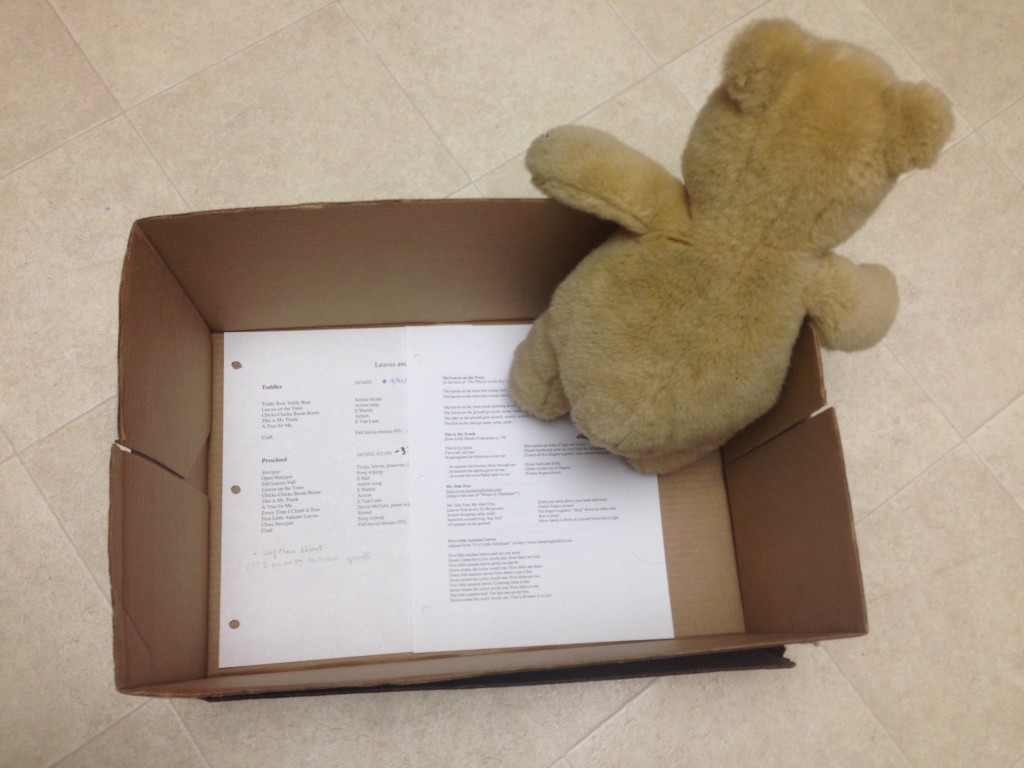
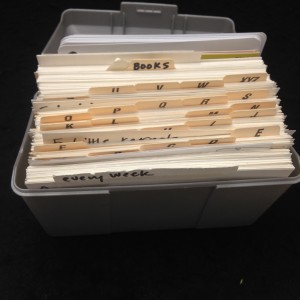
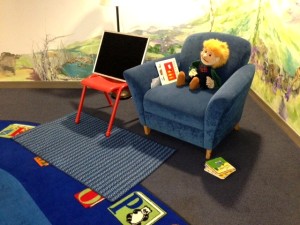
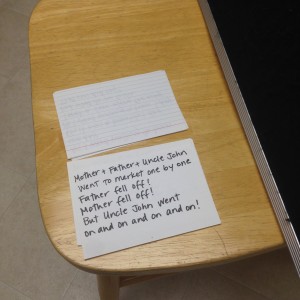

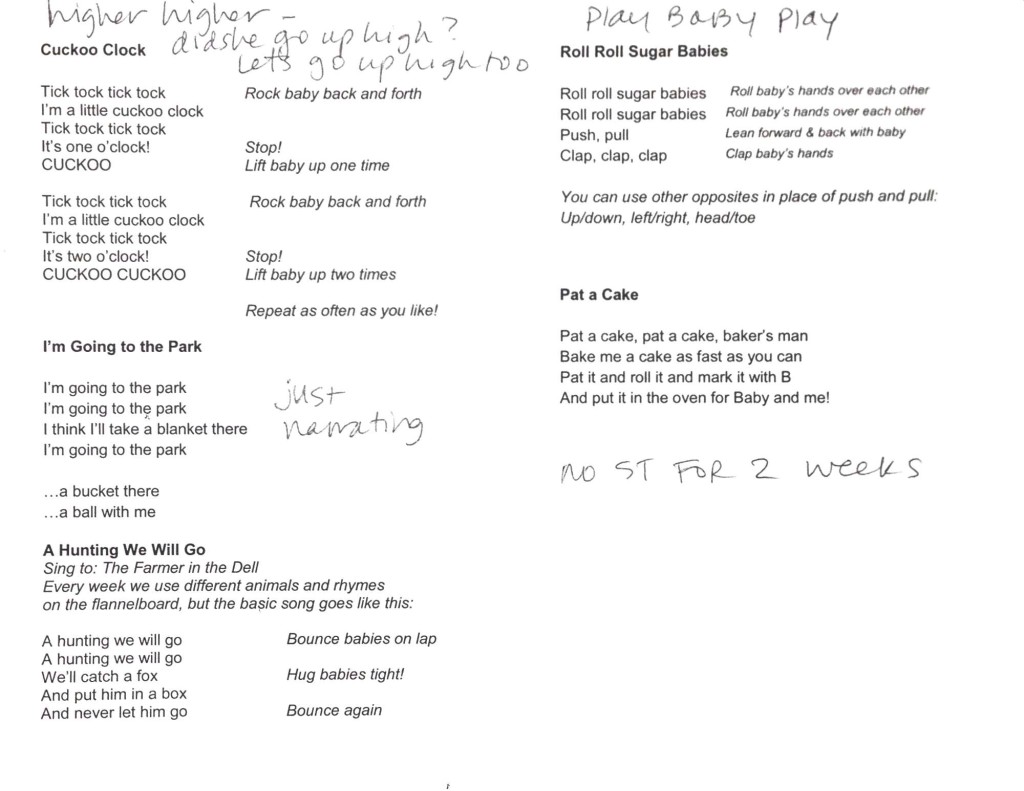
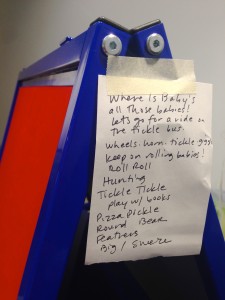

.jpg)

5 Responses to Cue Cards & Notes in Storytime